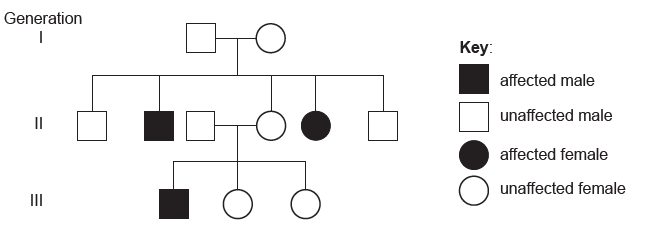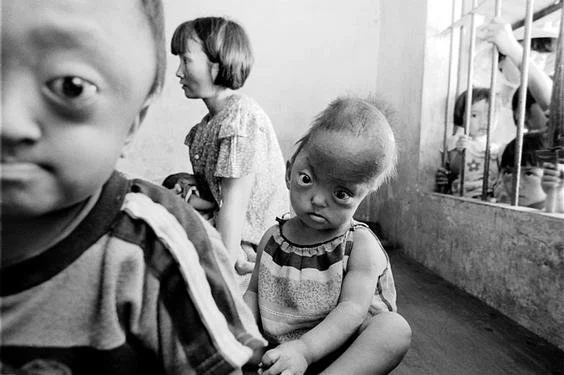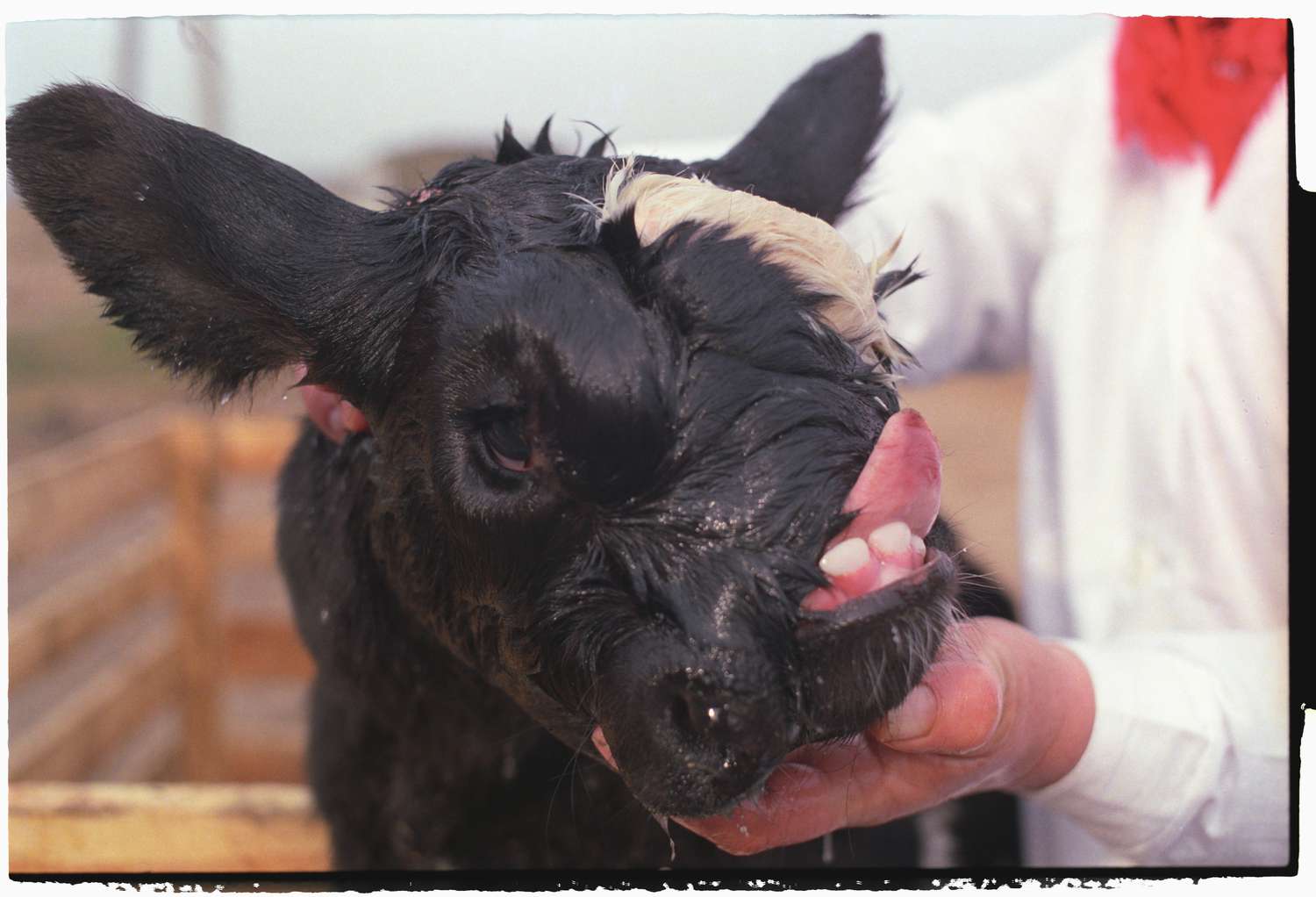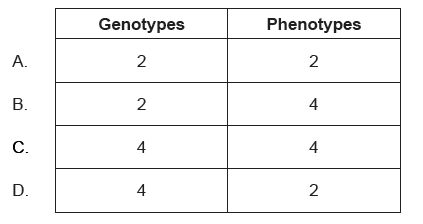IB Biology HL (HIGHER level)- 2024 – Practice Questions- All Topics
Topic 3.4 Inheritance
Topic 3 Weightage : 5%
All Questions for Topic 3.4 – Mendel’s Laws, Haploid Gametes, Types of Zygosity, Modes of Inheritance, Punnett Grids, Sex Linked Genes, Gene Mutation Rates, Pedigree Charts, Role of Environment, Lethal Alleles, Epistasis, Pleiotropy, X-Inactivation, Mosaicism
A dominant autosomal allele for lactase persistence allows humans to digest milk as adults. People who lack this allele are lactose intolerant in adulthood.

If J and K have a child L, what is the probability that L will be lactase persistent?
A. 25 %
B. 50 %
C. 75 %
D. 100 %
▶️Answer/Explanation
Markscheme
B
What proves that the inheritance of the condition shown in this pedigree chart is autosomal recessive and not autosomal dominant?

A. There is no affected person in generation I.
B. Both males and females are affected.
C. Two unaffected parents have a child that is affected.
D. Not everybody in generation III is affected.
▶️Answer/Explanation
Markscheme
C
If the disorder is recessive, neither parent has to have the disorder because
they can be heterozygous. The characteristic features of autosomal recessive inheritance is as follows:-
•Appears in both sexes with equal frequency
• Trait tend to skip generations
• Affected offspring are usually born to unaffected parents
• When both parents are heterozygous approx. 1/4 of the progeny will be affected.
What is the major health issue resulting from the Chernobyl nuclear accident in 1986?
A. Coronary thrombosis
B. Cholera
C. Sex-linked diseases
D. Thyroid cancer
▶️Answer/Explanation
Markscheme
D



Thyroid cancer was the major health issue resulting from the Chernobyl nuclear accident 1986 because of the exposure to radioactive iodine (I-131) from fallout. I-131 is a radioactive isotope that can accumulate in the thyroid gland and cause damage to the cells. People who lived in the Chernobyl area and were children or adolescents at the time of the accident were especially vulnerable to this exposure, as their thyroid glands were still developing and more sensitive to radiation. The World Health Organization (WHO) estimates that about 5,000 cases of thyroid cancer have been diagnosed among these people since the accident.
What maximum number of different genotypes and phenotypes are possible among the children of a mother with blood group A and a father with blood group B?

▶️Answer/Explanation
Markscheme
C
In humans a V-shaped hair line is dominant to a straight hair line. A woman with a V-shaped hair line and a man with a straight hair line have children. The woman has a mother with a straight hair line. What is the proportion of children who are likely to have a V-shaped hair line?
A. Half of the children
B. A quarter of the children
C. All of the children
D. None of the children
▶️Answer/Explanation
Markscheme
A
Question
A couple have four children whose blood groups are $A, B$ and $A B$. What is the likely combination of the parents’ genotypes?
A. $\quad I^A i$ and $\mathrm{I}^{\mathrm{B}} \mathrm{i}$
B. ||$^A i$ and ||$^B$
C. $\left.\left.\quad\right|^A\right|^B$ and ii
D. $\left.||^A\right|^A$ and $\left|I^B\right|^B$
▶️Answer/Explanation
Ans:A
If a couple have 4 children, each belonging to blood groups $A, B$ and $A B$ then the genotypes of the couple are heterozygous for A and heterozygous for B.
Therefore, the likely combination of parents’ genotype is $\quad I^A i$ and $\mathrm{I}^{\mathrm{B}} \mathrm{i}$.
